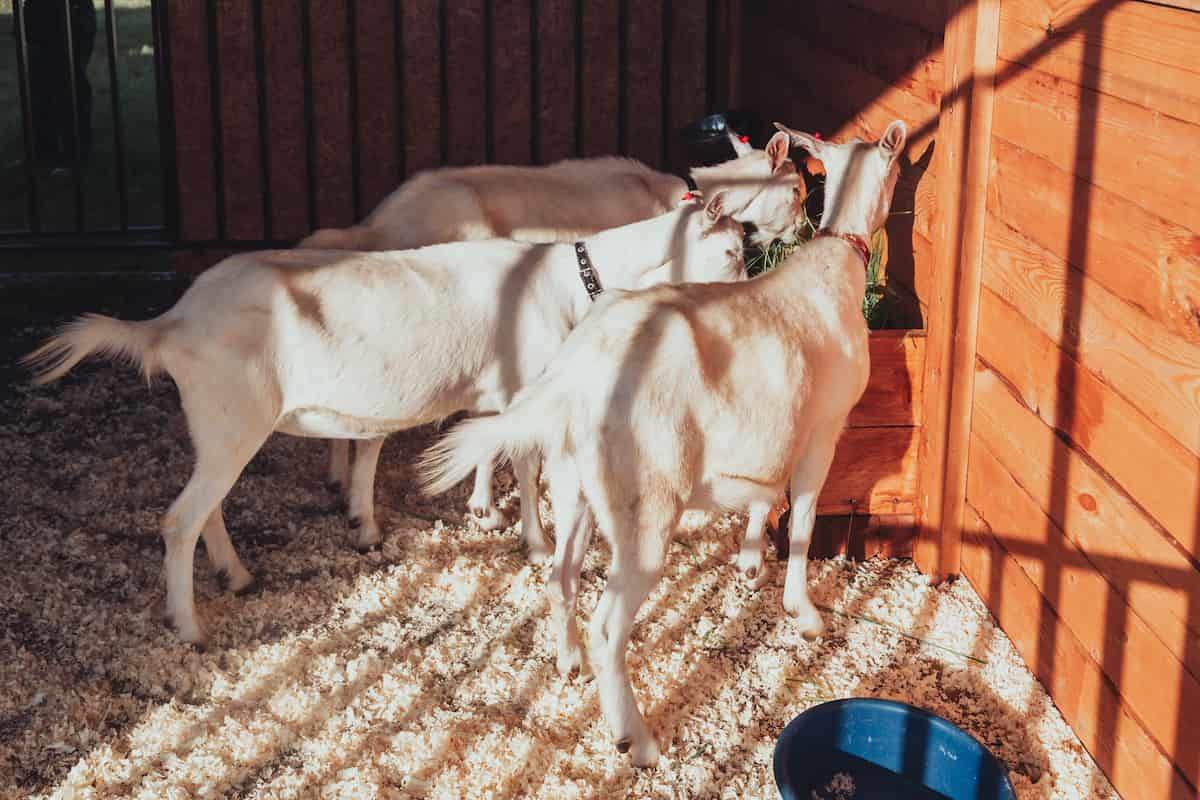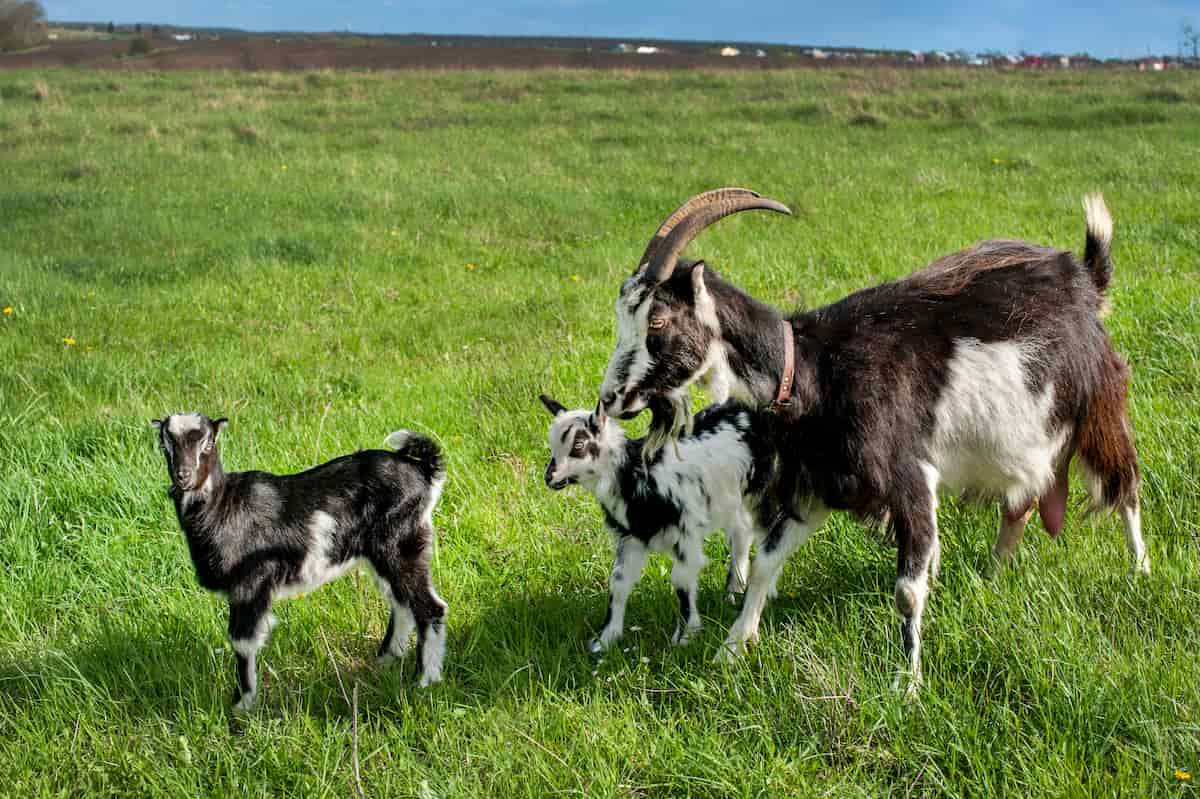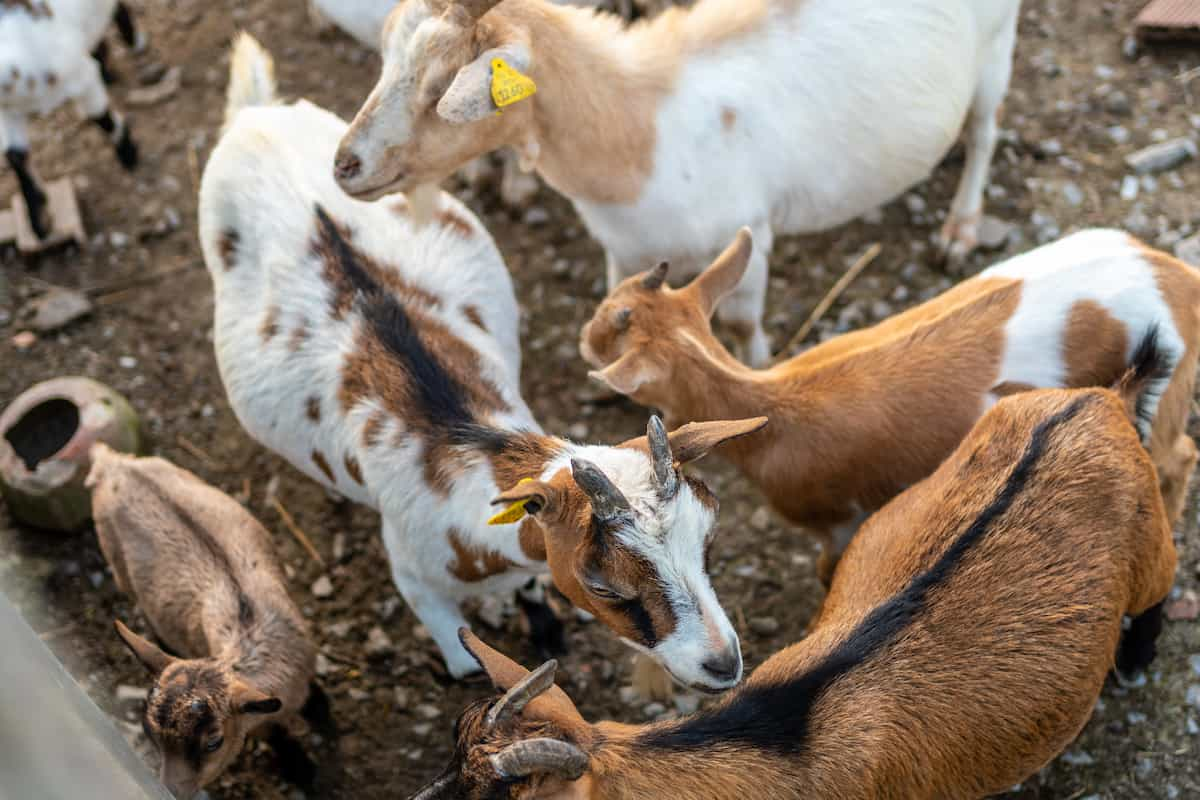Breeding and genetics play a crucial role in the productivity and profitability of goat farming, and understanding how to leverage these factors can unlock the potential of your herd. In this blog post, we will explore the fundamental principles of genetics and heritability in goats, as well as various breeding strategies that can be used to improve productivity.

We will also discuss common genetic diseases in goats, how to manage them, and how to enhance production traits through selective breeding and genetic technologies. By the end of this post, you’ll have a good idea of how to create effective breeding and genetic improvement programs for your goat herd, making your goats more productive and making you more money.
Goat Breeding and Genetics
What are Breeding and Genetics in Goat?
Traditionally, farmers have used various breeding strategies such as within-breed selection, crossbreeding, and introducing new breeds and strains to enhance meat, milk, and fiber production in small ruminants. However, recent advances in technology, such as the sequencing of the goat and ovine genomes and high-throughput SNP arrays, have revolutionized the field of animal breeding.
Additionally, new challenges such as climate change, increased awareness of animal welfare and the environment, and growing consumer demand for high-quality meat and milk products are posing new challenges for breeders of small ruminants. To solve these issues, modern breeding tools such as cloning, transgenesis, gene editing, and microbiome genotyping can increase genetic variation in each species, breeding new traits and products.
Common Meat Goat Breeds
Meat goats are popular for farmers looking to produce high-quality meat for sale. There are many different breeds of meat goats, each with unique characteristics and advantages.
- Boer goats – Originally from South Africa, Boer goats are now widely bred worldwide for their high growth rate, superior carcass quality, and strong disease resistance.
- Spanish goats – This breed is known for its hardiness and ability to adapt to different environments. They are good foragers and produce flavorful meat.
- Kiko goats – Originating from New Zealand, they are known for their hardiness and resistance to parasites. They produce lean meat and are good foragers.
- Tennessee fainting goats – These have a unique characteristic: their muscles freeze up when startled, causing them to “faint.” Despite this trait, they are a popular meat breed due to their easy-to-care-for nature and tender meat.
- Savanna goats – Originating from South Africa, Savanna goats are known for their high fertility, rapid growth rate, and resistance to disease.
Common Dairy Goat Breeds
- One of the most popular breeds is the Alpine, which produces high quantities of milk with a high butterfat content. The Saanen is another popular breed, with high milk production and a mild flavor.
- Other common dairy goat breeds include the Nubian, which produces rich and creamy milk with a high butterfat content, and the LaMancha, which produces milk with a lower butterfat content but a sweeter flavor. The Toggenburg is also a popular dairy breed, known for its hardiness and ability to produce high quantities of milk in colder climates.
- When selecting a dairy goat breed for improved production, it’s important to consider factors such as milk quantity and quality, as well as the temperament and hardiness of the breed.
Common Diseases in Goats
Goats are susceptible to several diseases, including coccidiosis, helminthiasis, Clostridium perfringens type D, contagious ecthyma, chronic wasting, and paratuberculosis. Coccidiosis can cause diarrhea, frailness, and death in limbs but can be managed by moving kids to clean ground and using coccidiostats. Helminthiasis can lead to weight loss, anemia, and coughing, and tapeworms may indicate the need for parasite control.
Clostridium perfringens type D is fatal and causes severe diarrhea and depression, but it can be prevented through vaccination and treated with antitoxin and antibiotics. Contagious ecthyma can cause lesions and nursing difficulties, and chronic wasting can be caused by various factors requiring culling. Paratuberculosis can be diagnosed through testing, including culture and histopathology of the ileocecal node.
Genetic Diseases in Goats
- Polioencephalomalacia: A thiamine deficiency that causes neurological symptoms, such as blindness, head pressing, and seizures.
- Caprine Arthritis Encephalitis (CAE): A viral disease that causes chronic inflammation, arthritis, mastitis, and respiratory problems.
- Hereditary Chondrodysplasia: A skeletal abnormality that causes short limbs, a small head, and difficulty walking.
- Congenital Hyperkeratosis: A skin condition that causes thick, hard skin on the nose, hooves, and udder.
- Myotonia Congenita: A muscle disorder that causes muscle stiffness and difficulty walking.
In case you missed it: Frequently Asked Questions About Goat Farming

Benefits of Breeding and Genetics for Improved Goat Production
- Increased milk production: The herd can increase milk production by selectively breeding goats with high milk yield.
- Improved meat production: By breeding goats with desirable traits such as a fast growth rate, good conformation, and high meat yield, it is possible to improve meat production.
- Disease resistance: By selectively breeding goats with natural resistance to common diseases, the herd can become more resistant to diseases and require less veterinary intervention.
- Adaptability to the environment: By selectively breeding goats better suited to local environmental conditions, such as heat, drought, or disease-carrying insects, it is possible to improve the herd’s ability to survive and thrive in its environment.
- Improved reproductive performance: By selectively breeding goats with desirable reproductive traits such as high fertility and prolificacy, it is possible to improve the herd’s reproductive performance.
- Improved profitability: By improving milk and meat production, disease resistance, and reproductive performance, goat producers can increase the profitability and sustainability of their operations.
Breeding Strategies for Improved Productivity
- Adaptability of the breed in local agro-climatic conditions: The chosen breed should adapt well to the local climate and environmental conditions to ensure better productivity and survival rates.
- Socio-economic conditions of the farmer: The breeding strategy should be formulated keeping in mind the socio-economic condition of the farmer. The chosen breed should be profitable and sustainable for the farmer.
- Market demands: The breeding strategy should be designed to meet the market demands for the product, whether it is meat, milk, or fiber.
- Availability of good quality bucks: Good quality bucks are essential for breeding to ensure good genetic traits in the offspring. The availability of such bucks should be considered while formulating the breeding strategy.
- Conservation of indigenous recognized breeds: The breeding strategy should aim at preventing the genetic dilution of Indigenous-recognized breeds, which can be achieved by controlled breeding and genetic management.
Tips for Effective Breeding and Genetic Improvement Programs
- Select the Right Breeding Stock: Selecting the right breeding stock is the first step toward a successful breeding program. Choose animals that exhibit desirable traits such as high fertility, good growth rates, disease resistance, and strong conformation.
- Understand Genetics: Breeders should have a basic understanding of genetics to develop an effective breeding program. They should know heritability, genetic correlation, and genetic selection to make informed breeding decisions.
- Use Pedigree Information: Pedigree information can be a valuable tool in a breeding program. Breeders should use pedigree data to identify animals with desirable traits and to avoid inbreeding.
- Conduct Regular Performance Testing: Regular performance testing is essential to evaluate the progress of the breeding program. This includes measuring traits such as weight gain, milk production, and fertility.
- Implement Proper Record-Keeping: Record-keeping is crucial to ensure accurate evaluation of the breeding program. It involves keeping track of pedigree information, performance testing results, and other important data.
- Engage in Continuous Learning: Breeding is a constantly evolving field. Breeders should continuously learn through seminars, workshops, and other training programs to stay up-to-date with the latest developments.
Enhancing Production Traits Through Genetics
- Genetic selection can improve production traits such as milk yield, meat yield, and goat reproductive performance.
- Breeding strategies, such as selective and crossbreeding, can enhance goats’ desired production traits.
- Inbreeding can lead to a decrease in production traits, as it can increase the occurrence of undesirable genetic traits.
- Proper nutrition, management, and healthcare practices are essential to ensure optimal production traits in goats.
- Advanced reproductive technologies, such as artificial insemination and embryo transfer, can facilitate the incorporation of desirable genetic traits into goat populations.
- The development of molecular markers and genomic technologies has made identifying and selecting goats with desirable production traits easier.
- Implementing effective breeding programs, and incorporating the latest genetic and reproductive technologies, can help enhance goats’ production traits, leading to improved profitability for goat farmers.
In case you missed it: How to Raise and Care for Pygmy Goats: DYI Guide for Beginners

Conclusion
Goat breeding and genetics offer immense potential for improving the productivity and profitability of the goat industry. By implementing effective breeding programs and utilizing advanced reproductive and genomic technologies, farmers can enhance the desirable production traits of their goats and maximize their profits.
- Feed Your Flock for Less: Top 10 Tips to Save on Chicken Feed
- Ultimate Guide to Ossabaw Island Hog: Breeding, Raising, Diet, and Care
- Hatching Answers: The Top 10 Reasons Your Chickens Aren’t Laying Eggs
- Eggs and Economics: Breaking Down the Cost of Raising Backyard Chickens
- Defend Your Greens: Proven Methods to Keep Iguanas Out of Your Garden
- Ultimate Guide to Cinnamon Queen Chicken: A Comprehensive Guide for Beginners
- Ultimate Guide to California Tan Chicken: Breeding, Raising, Diet, Egg-Production and Care
- Ultimate Guide to Marsh Daisy Chicken: Breeding, Raising, Diet, and Care
- 10 Types of Chicken Farming Businesses You Can Start for Profits